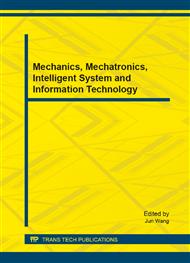p.35
p.40
p.46
p.52
p.60
p.65
p.70
p.74
p.78
Time Marching Simulation of Aeroelasticity Based on a Coupled Numerical Method
Abstract:
A numerical method integrating computational fluid dynamics and computational structural dynamics for predicating wing flutter in time domain is described. A strong coupling employing the dual-time method is adopted. The Newmark algorithm is used to solve flutter equation in modal spaces while the finite-volume algorithm for the Navier-Stokes equations is used to solve the flow. The computed flutter boundaries of AGARD wing 445.6 for frees-tream Mach numbers ranging from 0.499 to 1.141 agree well with the experiment than using the DLM.
Info:
Periodical:
Pages:
60-64
Citation:
Online since:
August 2014
Authors:
Keywords:
Price:
Сopyright:
© 2014 Trans Tech Publications Ltd. All Rights Reserved
Share:
Citation:


